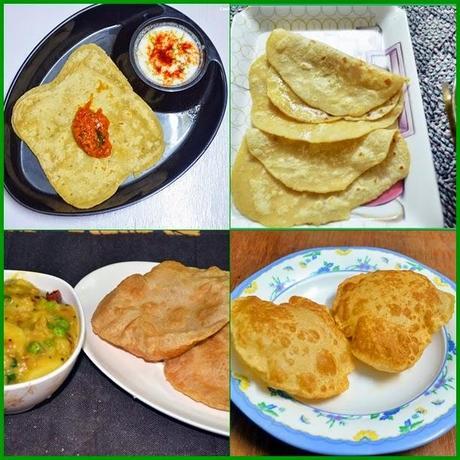
I am trying to post recipes/tips in this space as per reader's request at least once or twice a week.I am very happy that my dear reader's are counting me in and taking time to ask for tips/recipes etc.I am always thrilled and happy to connect with a new reader and recently after my post about making perfect dosai,few people asked me about perfect chapati making tips.Last week I again got a mail asking for tips to make perfect poori after I posted this potato poori.So I thought of writing a combined post on all these three much sought after Indian flat breads.I am a south Indian and rotis/chapathis are not that common in my home,all these pointers I am writing here are tried and tested a numerous times after many dreadful failures.So it is like If I have been successful in making these flat breads,I absolutely do not see a reason for anyone not to succeed.Of course i6t will not be a cakewalk for the first few times,but I am sure you will making it prefect with some practice,go ahead and get rolling your dough :)
Chapathis and phulkas:

- According to my understanding and knowledge from different books,cookery shows,A chapathi is a unleavened Indian flat bread made of whole wheat flour and cooked on a tawa in high heat.Traditionally a chapathi has many foldings with ghee in between each folding.Few places ghee is used while cooking chapathi.
- Phulka is also an unleavened Indian flat bread,the difference being the dough is more softer than chapathi,rolled really thin and cooked on direct flame using tongs for 30-40 second on one side.
- Poori is a deep fried Indian flatbread and the dough should be little bit stiff compared to chapati/phulka and dough should not be allowed to rest for poori.
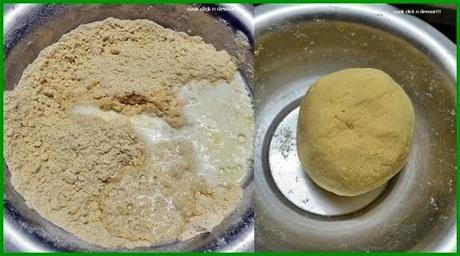
Rolling:1.For chapathis the rolling should be in such a way that i is a bit thicker in the middle and thinner in the corners.You can roll as a circle,apply ghee and fold or just a circle without any ghee.It depends on your choice.
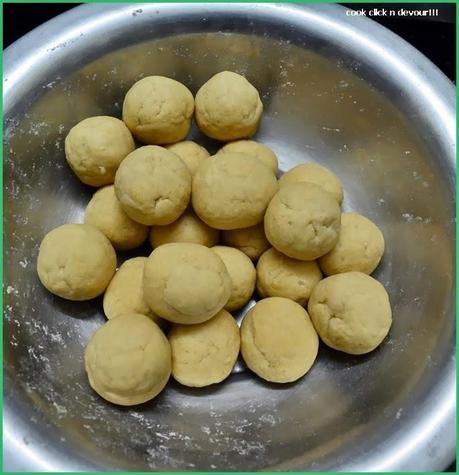
2.For phulka roll into comparatively thin circle than chapathi
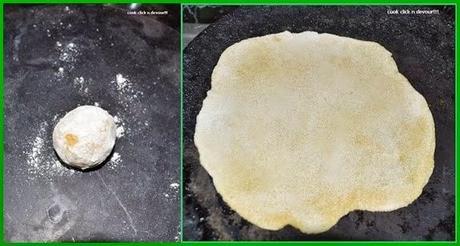
Cooking:1.Use a cast iron tava for cooking chapthi.It retains heat for a long time and helps in uniform cooking.2.Place the rolled chapati on the tava and let it cook on one side till light brown spots appear.Then flip and cook from the other side.
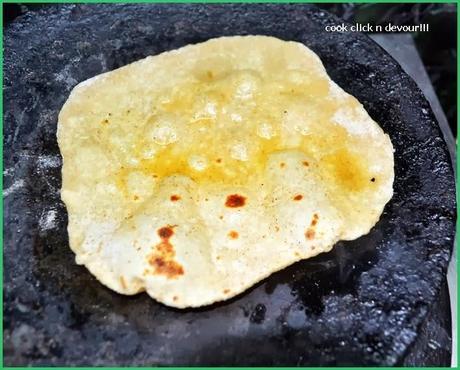
3.Apply some ghee and stack the cooked chapathis in a hot case.4.For phulka,first place the rolled dough on the tava.Let it get cooked for 20 seconds.Do not wait for brown spots,keep the other burner of the stove on,and with tongs place the non cooked side directly on the flame.It will puff up now and once cooked remove from flame.Usually phulka is eaten dry without any fat like ghee.Keep closed until serving to retain the softness.Notes:1.If your chapathis turn very dry and patchy it means you have used excess flour for dusting.2.Keep adjusting the flame to get perfectly cooked chapathis.3.There are lots of factors involved in getting this right,so even this fails for the first time you can get it done with some practice.
Poori:

1.Though it sounds very easy,making pooris can be a bit tricky.There are N number of recipes for perfect poori dough,few people use rava along with wheat flour.Using rava makes crispy pooris.In general the dough should be tight and should not be rested.2.The oil should be at correct temperature for pooris to puff up well.You can test this by dropping a small peas sized dough in the oil.If the dough settles down at the bottom the oil is not hot,if it raises immediately and dough turns dark,oil is too hot.The dough should raise after 2-3 seconds and then the oil is at right temperature.
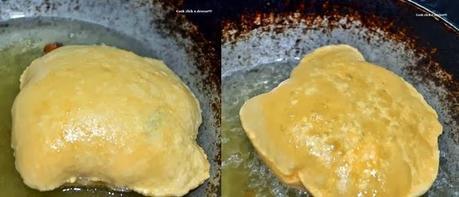
3.Pooris taste best when eaten immediately. Notes:1.After sliding the poori in oil,press it once gently as it helps in puffing.2.If you rest the dough for long time,pooris will absorb excess oil and turn soggy.
Please note that all the above pointers are to help the beginners and those who are looking for some tips on these flatbreads.Those who are very experienced and follow totally different methods for making chapatis are welcome to share their points in comments.
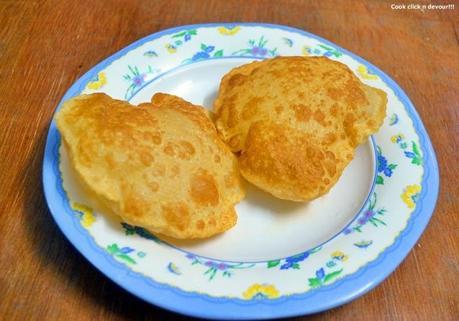
Check here for the other Indian flat bread varieties, side dish for flatbreads.
